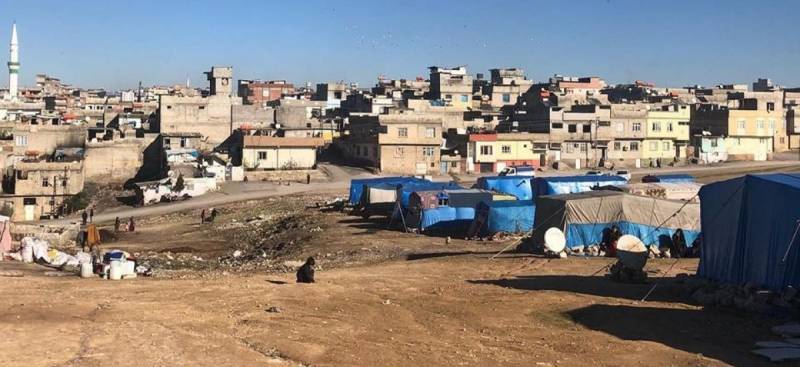We are in Nizip, a district of Gaziantep province in southeastern Turkey, at a camp inhabited by the Romani-speaking Dom people of Syria. This is not an official camp. It was established when a group of Dom people came from Syria, found an empty lot, and set up tents. Over time, with the support of NGOs, it became a permanent camp. In fact, many tents in the camp have received a residential address designation from the mayor’s office.
In this camp in Nizip, around 25 tents house 150 people belonging to Syria’s Dom and Abdal communities. There used to be more, but over time some were able to transition to homes in tenement neighbourhoods. The camp is full of children. These children do not attend school. I begin chatting with one of the boys. I learn that they usually earn money from collecting scraps and salvaging waste.
They sell 1 kg of scraps for 500-700 kuruş. At first, I think I must have misheard, but it is true— they get 500-700 kuruş, which does not even total 1 Turkish lira ($0.17). Generally, women, children, and the whole family go salvaging together. They get electricity and water from the next neighbourhood over. Each month they pay 20 TL for water, and 50 TL for electricity. Just right of the camp is the scrap salvage centre. The scraps collected from Nizip’s garbage bins are brought to this area, sorted through, and sold. They are able to visit general practitioner doctors or government hospitals, but only if they have ID cards denoting their temporary protected status. I talk to women in the street, hunched against the cold with their children. They say, “This is how we pass each day. Either outside in this cold weather or out collecting scraps, we have no other life.”
The most important factor keeping them afloat is an important NGO based in Gaziantep called Kırkayak Kültür. The organisation’s founders, led by Kemal Vural Tarhan, personally deal with the problems faced by families here. When trouble arises with the police they intervene, when families get sick they pay visits, and they provide food aid. They help ensure access to government services, including getting ID cards for those without identification. Throughout the day I watch in awe as people interact with Kemal.
Kırkayak Kültür was established in 2010 by 16 people. The founders include university professors, doctors, and engineers. For many years, they have been working with Roma people in the Middle East. They engage in arts, culture, and advocacy. They organise film festivals. And they do all of this through a rights-based framework. They provide immigration and arts services from their two central offices in Gaziantep. They support Syrian artists, and bring activists from Turkey and Syria together. They work on education programs for Syrian children. They have a Dom Research Center as well. They have produced a strategic plan for Syrian Doms in Turkey, Jordan, and Lebanon.
I read the Strategic Plan. I learn how Dom communities have been subjected to violence and forced migration, even though they haven’t taken any sides in the regional fighting. They face anti-Roma discrimination and are ostracised. They are one of the most defenceless groups among all refugees. These injustices cause them to be invisible.
“Thousands of Roma communities are trying to live like ghosts in Middle Eastern countries, hundreds of thousands of children are deprived of education, and men and women try to survive by working daily jobs and asking for help on the streets,” says the organisation’s strategic plan.
The research conducted on Syrian Doms in all three countries shows that this community has developed two types of strategies to stay alive in this process of migration:
“[The first option is for] the families take refuge in larger cities and scatter to different neighbourhoods which enables them to become invisible. They introduce themselves as Arabs, Turkmen or Kurds, according to the language that they are most fluent in. Families take refuge especially in larger metropolitan areas like Istanbul, Ankara and Beirut trying to survive in these foreign settlements. Deprived of the community, communality and cohabitation, the members of the families are thoroughly exposed to crime out of desperation.
The second option for the community was to return to being nomads. They crossed borders like other hundreds of thousands of people; a ramshackle tent and a couple of pottery were all they needed to survive. They try to feed their children by scavenging waste and scraps or by day labour or seasonal labour. They started to wander from city to city to find employment and to feed their family.”
Of Turkey’s nearly 4 million Syrian refugees, around 40,000 belong to Dom and Abdal communities. These refugees are the ones living in the most difficult conditions. This is evident from the tents they live in. They have nothing to hold onto, and no tomorrow. Illness, hunger, and hopelessness are rampant. On a cold Nizip morning, on the one hand I am faced with this portrait. On the other hand, there are those like Kırkayak Kültür who are working to turn that hopelessness into hope.
